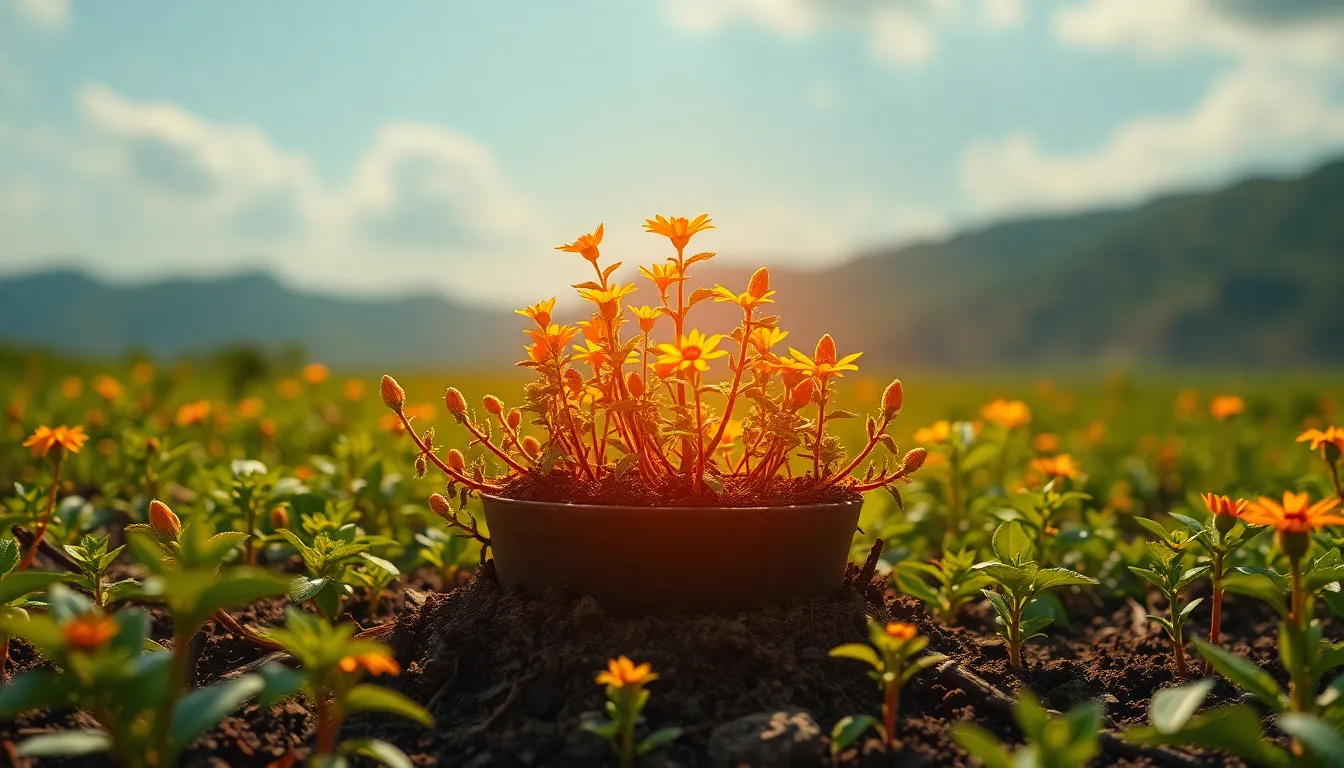The Myth of the Self-Sufficient Plant: What You Should Know
Introduction: The Allure of Self-Sufficiency in Gardening
The concept of self-sufficient plants is an enticing one for gardeners and horticulturists alike. The idea that certain plants can thrive without much human intervention promises a more natural and effortless gardening experience. However, the reality is far more complex. Understanding the dependencies and interactions within the plant kingdom is crucial for cultivating a healthy garden.
Defining Self-Sufficiency in the Plant Kingdom
To label a plant as self-sufficient, one might think it can grow, reproduce, and thrive without external resources or support. However, this definition is misleading. Most plants rely on a variety of factors to survive and flourish, including soil health, water availability, and interactions with other organisms.
Common misconceptions about self-sufficient plants include:
- Assuming that plants can thrive solely on natural rainfall.
- Believing that plants do not require any nutrients from the soil.
- Thinking that all plants can reproduce independently without pollinators.
The Role of Soil Health and Nutrient Availability
Soil health is foundational to plant growth. The composition and quality of soil directly affect a plant’s ability to absorb nutrients and water. Healthy soil is rich in organic matter, minerals, and essential microbes that contribute to nutrient cycling and plant health.
Soil microbes and ecosystems play a vital role in:
- Decomposing organic matter to release nutrients.
- Forming symbiotic relationships with plant roots, such as mycorrhizal fungi.
- Improving soil structure and water retention.
Water: The Lifeblood of Plant Survival
Water is essential for all living organisms, and plants are no exception. Understanding a plant’s water needs is crucial for successful cultivation. Different plants have varying requirements, and factors like climate, soil type, and growth stage can influence these needs.
The impact of water availability includes:
- Drought: Insufficient water can lead to wilting, stunted growth, and even death.
- Excess Water: Overwatering can cause root rot and fungal diseases, posing a significant threat to plant health.
Pollination: The Hidden Dependency
Pollination is a critical process for the reproduction of many plants. While some plants are self-pollinating, the majority rely on pollinators such as bees, butterflies, and birds to transfer pollen between flowers, facilitating reproduction.
Key points about pollination include:
- Self-Pollinating Plants: These plants can fertilize themselves and do not require external pollinators.
- Cross-Pollinating Plants: These plants depend on external agents for successful reproduction and genetic diversity.
Companion Planting: Nature’s Collaborative Strategy
Companion planting involves growing different species of plants in proximity for mutual benefits. This strategy recognizes that plants can support one another in various ways, enhancing overall garden health and productivity.
Benefits of companion planting include:
- Natural pest deterrence through aromatic plants.
- Improved nutrient uptake when plants share root space.
- Enhanced pollinator attraction by offering diverse blooms.
Examples of effective companion planting include:
- Beans and corn, where beans fix nitrogen in the soil for corn.
- Tomatoes and basil, which enhance flavor and repel pests.
Pest Control: The Balance of Nature
Pest management is crucial for maintaining a healthy garden ecosystem. Beneficial insects such as ladybugs and lacewings can naturally control pest populations, reducing the need for chemical interventions.
Neglecting pest management can lead to:
- Overpopulation of harmful insects.
- Loss of crop yield and plant vitality.
- Increased reliance on pesticides, which can harm beneficial organisms.
Climate and Environmental Influences
Climate and environmental conditions greatly influence plant growth and health. Factors such as temperature, humidity, and seasonal changes can affect a plant’s ability to thrive.
The role of biodiversity is crucial for ecosystem resilience. Diverse plant communities are better equipped to withstand climate fluctuations, pests, and diseases.
The Impact of Human Intervention
Human gardening practices can either promote or hinder plant self-sufficiency. Techniques such as crop rotation, organic fertilization, and integrated pest management can enhance plant resilience.
Sustainable gardening techniques include:
- Using native plants that are adapted to local conditions.
- Implementing permaculture principles to create self-sustaining systems.
- Practicing responsible water management to conserve resources.
Conclusion: Rethinking Self-Sufficiency in Plant Care
The idea of self-sufficient plants is a myth that oversimplifies the complex interdependencies in nature. Understanding the various factors that contribute to plant health and resilience is essential for successful gardening. By adopting a holistic approach that emphasizes the importance of soil health, water management, pollination, and biodiversity, gardeners can create thriving ecosystems that support both plant and human needs.
In conclusion, embracing the interconnectedness of the plant kingdom not only enhances gardening success but also fosters a deeper appreciation for the intricate web of life that sustains us all.



